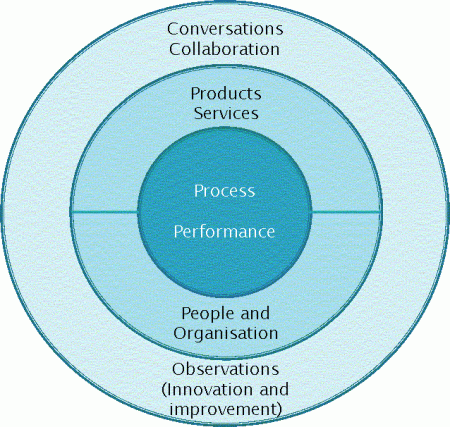 I have recently seen opinions about the relevance and importance of the extremes between web 2.0 / user generated content (UGC) and editorial content. There are vigorous proponents at each extreme – and in the middle.
I have recently seen opinions about the relevance and importance of the extremes between web 2.0 / user generated content (UGC) and editorial content. There are vigorous proponents at each extreme – and in the middle.
I sit firmly in the middle, especally when you are talking about corporate sites or intranets. As with most things in life the truth is somehwere in the middle between extremes.
Policies, procedures, product information, facts, corporate position and philosophy are never going to be generated through social media or user generated content. UGC can certaintly influence corporate thinking. Comments and observations about products and services are vital for innovation and ongoing improvement, and can provide fresh ways of thinking. UGC can shed valuable light about how brands and products / services are perceived / received by their market, be it internal within an organisation or in a pubic arena.
How you treat and manage each type of content needs to fall under a governance model and philosophy for your information architecture and the associated information management processes. Factual information comes from the ‘inside’, ie. from a managed, authoritative source, such as a product management, process management or communications group. Observations, comments and discussion comes from interested, typically consumer groups ie. from the ‘outside’. The inside group needs to listen to the outside group – there are always wisdoms to be heeded. These wisdoms will fall into 3 main categories:
* observations (for better or worse) about the products and services you are offering – and these can be valuable to heed for product or service improvement / innovation
* shared experience – the ‘truth’ about the product or service based on experience from your consumers, and information filling the gaps in what you are providing
* pure subjective / incorrect opinion and intentionally malicious information – usually coming from people with a barrow of some kind to push
To help manage each type of content you need a model and set of management / governance procedures and practices. It really doesn’t matter how this is structured – the most important thing is that you develop a cogent model which can be easily communicated to your stakeholders. Having said that, people usually have difficulty developing and communicating models.
The diagram below presents a model showing how inside and outside information can be categorised and relates to each other. Processes for approval, review and management of each type of content will be similar within the groupings.
Processes and insights are the key focus of content and what people want from knowledge management systems, when considering unstructured content.
Process content provides ‘how to / when to’ type content and might be procedures, flowcharts, FAQ etc. It also covers automation such as forms and workflow. Consumers of this content come from all parts of the organisation and may include external participants
Performance content relates to reports and analysis. It may include, or provide access to, structured information such as dashboards, plus explanatory content which interprets and explains performance data (depending on the capability of the ECM). Consumers of performance data are typically in an internal managerial role.
Performance content relates directly back to metrics relating to key organisational processes, for example, sales processes, manufacturing processes. If exposed externally you may be providing data about service or fulfilment levels.
Products and services are the outcome of processes. Within an organisation, people generally know about products and services, and are more concerned with process related content.
Organisational information gives an operating context for people’s responsibilities and roles. People are responsible not for the products and services of an organisation, but the processes associated with their design, development, production, storage, and delivery. Organistional information is important both for internal (intranet) and public (internet) use but will have different degrees of detail and presentation.
An intranet should provide people with training and development tools. Training is predominantly process execution related, and about the acquisition of skills and knowledge in order to manage processes and the people responsible for their execution. Similar information is provided externally but more in the nature of FAQ, service levels or simplified / high level process summaries.
Surrounding this formal, more easily managed content are less formal processes for collaboration and communication. All such content is transient, and about events, occurrences and questions which arise in the course of doing something – in other words, participating in processes.
Providing good communication and collaboration tools makes processes more effective and efficient. Problems can be resolved before they become issues, and advantages can be taken to improve aspects of processes in train.
It becomes critical to try and capture observations and ideas from people where they can improve processes, products, services and the way the organisation works.
These observations lead to continuous improvement and innovation. Throughout an intranet and its associated tools, an easy and consistent way of capturing observations and these wisdoms should be found, together with processes for assessment and incorporation.
Conversely, if misinformation is being published you need processes to track, respond and report.
The achievement of such a structure and its operation in practice is a key governance responsibility of a strategic oversight group or committee.

October 21, 2010 at 6:10 am |
Great article Simon. It nicely explains the relationship between social conversations and the intranet.
And I believe you have hit the nail on the head when you mention the need for “an easy and consistent way of capturing observations and these wisdoms, together with processes for assessment and incorporation”. This step is missing in many organisations – and is badly needed.
LikeLike